Heat Pump Compressor Not Turning On? Here’s What To Do
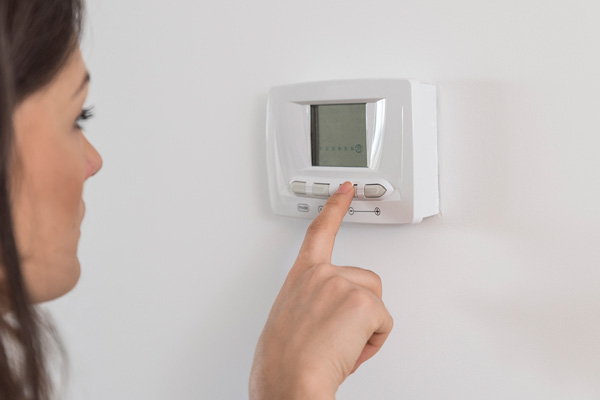
We can’t do anything about the weather, but we can control our indoor environment with the help of a heat pump. If it’s getting too hot, then we can use it to cool our homes. If it’s getting too cold, then we can tweak the settings to feel warmer. Heat pump systems are extremely useful thanks to their versatility. But what do you do if your heat pump compressor not turning on? It’s a big problem that requires an immediate solution for the health and comfort of your family. Read on to learn about the most common causes.
Heat Pump Compressor Not Turning On
Contents
- 1 Heat Pump Compressor Not Turning On
- 2 How a Heat Pump Compressor Works
- 3 Reasons Behind a Heat Pump’s Refusal to Turn On
- 3.1 1. An Aging Heat Pump Thermostat
- 3.2 2. Spent Thermostat Batteries
- 3.3 3. Proximity to Heat Sources
- 3.4 4. The Heat Pump Power Connection
- 3.5 5. Dirty Heat Pump Air Filters
- 3.6 6. The Outdoor Temperature
- 3.7 7. Frozen Outdoor Heat Pump Coils
- 3.8 8. Heat Pump Water Leaks
- 3.9 9. Poor Air Circulation
- 3.10 10. Heat Pump Has Low Refrigerant
- 3.11 Conclusion
- 4 Call McAllister Energy For All Of Your HVAC Requirements
Heat pumps are complex systems with many moving parts. If any of these fails, then the whole thing might not work as it should. Sometimes the problem is easy to trace and resolve. At other times, you will need to rely on the knowledge and experience of certified HVAC technicians to figure out what’s going on. Four of the usual suspects include an erring thermostat, a power supply issue, a dip in the refrigerant, and a frozen outdoor coil. Each of these may have its own underlying causes, as well. Dig deep for a lasting fix.
How a Heat Pump Compressor Works
Troubleshooting will be easier if you have a basic understanding of how a heat pump works. In summary, it is akin to the design of air conditioners. The main difference is that it can work in reverse to make it useful year-round. Both are powered by electricity and deploy a refrigerant flowing around the system for heat transfer. Movement is facilitated by the heat pump compressor which is the biggest consumer of energy among components. A blower pushes wind through the evaporator coils to change indoor temperature. Another blower moves air through condenser coils outdoors.
Reasons Behind a Heat Pump’s Refusal to Turn On
Now that we are aware of the system’s foundations, let’s look at the possible reasons why it is not working as it should. Here are ten leads to start us off:
1. An Aging Heat Pump Thermostat
The thermostat is the heat pump’s control center. It is what dictates the system to run or stop based on sensor readings. If the indoor temperature is a long way from the user’s settings, then it will push the heat pump to run in cycles until the goal is achieved. After this, it will stop and monitor the ambient temperature to kick in when necessary. The problem with old thermostats is that they may not work flawlessly because of dirt and grime on the sensors. Wear and tear could also affect accuracy. Cleaning might help, but be prepared to replace the thermostat if needed. Consider a high efficiency thermostat, such as a programmable thermostat for your home.
2. Spent Thermostat Batteries
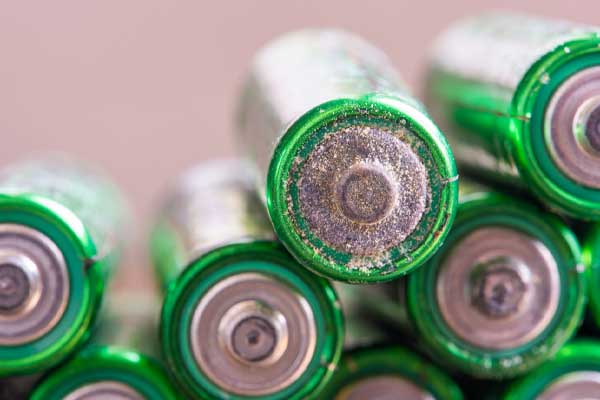
Maybe the thermostat is relatively new and accurate. However, its power source is not providing it with enough energy to start up. If the thermostat can’t turn on, then the heat pump won’t be able to receive the signal to begin its heating or cooling cycles. Check the batteries on the device. Perhaps these no longer carry enough charge. Replace them with fresh ones and see if that gets the thermostat going. If you see the display flashing numbers, then you may have solved the problem.
3. Proximity to Heat Sources
If the issue persists, then you need to keep investigating to figure out the root cause. You have already cleaned the thermostat and replaced the batteries. The device is working but the heat pump compressor is still not turning on. Consider the possibility that the thermostat is getting unusually high sensor readings because of its proximity to heat sources. Maybe you have a space heater or an open window near it. Move the heater elsewhere and close use the window shades to prevent sunlight from hitting the thermostat. These should help it get more accurate room temperature readings.
4. The Heat Pump Power Connection
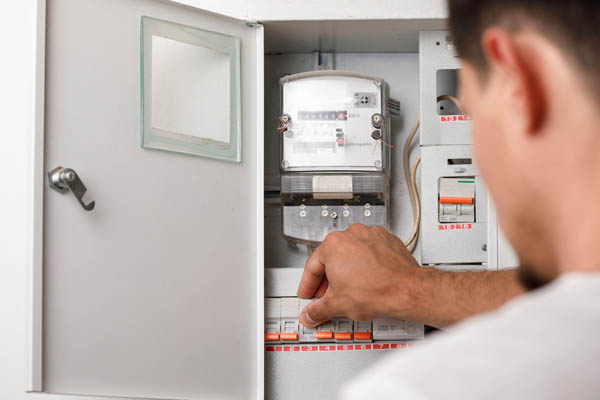
When any home appliance is not starting up, one of the first things that we do is check whether the unit is plugged or not. You can do the same with the heat pump. It should have its own circuit breaker to isolate it from the rest of the home’s circuitry. See if the heat pump circuit breaker is set to ON. If not, then switch it to see whether that solves the problem. You may also want to check for a blown fuse or a tripped breaker. Fuse replacement or breaker reset should make things better.
5. Dirty Heat Pump Air Filters
If the system runs but trips again, then there is probably another problem you need to contend with. For example, the heat pump may be working too hard and drawing more power than usual. The breaker is not able to handle this, so it keeps tripping each time you start. One of the possible reasons for this behavior is dirty air filters. These prevent adequate airflow which forces the system to overcompensate. Check the filters for dirt. Replace them if necessary to normalize the flow of air into the system.
6. The Outdoor Temperature
Every HVAC system has its own rated capacity for heating and cooling. Contractors help their customers find a unit of suitable size for their home given all the relevant variables. However, there may be times when the weather exceeds the expected temperature range in the region. Extreme cold is particularly hard for a heat pump to keep up with. If it can’t provide enough heating, then an auxiliary heating system can kick it to provide support. The downside is that this auxiliary heat requires more power which may trip the breakers. Consider turning the heat down and adding more layers of clothing to prevent a recurrence.
7. Frozen Outdoor Heat Pump Coils
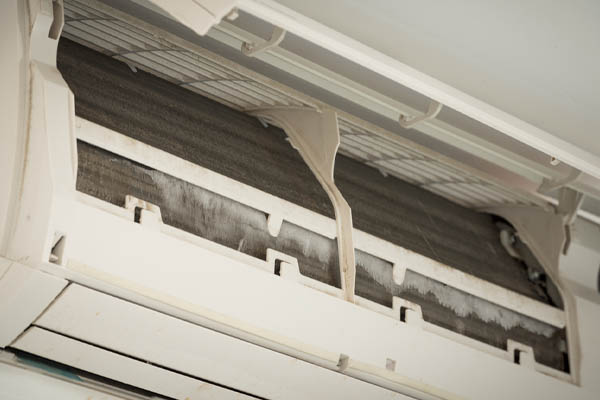
The heat pump’s outdoor unit has coils that require constant airflow to operate effectively. If these coils are frozen, then ice will block airflow and the system won’t be as efficient in doing its job. It will try to work harder to reach its goals, but this could backfire as the strain could make the system shut down. Some homeowners might be tempted to chip off the ice from the coils, but this could damage the system. It is better to shut things down for a while and let the ice melt naturally before restarting.
8. Heat Pump Water Leaks
Step back from the outdoor unit and survey its immediate environment. Look for things that might have contributed to the frozen coils. If you want to prevent this problem from happening again, then you must find the source of excess moisture. One possibility is gutter run-off. Icy water may be spilling to the ground from the roof directly overhead. If so, then fix the issue with the help of a roofer. You should also make sure that the outdoor unit has a 2-foot clearance on all sides for good air movement.
9. Poor Air Circulation
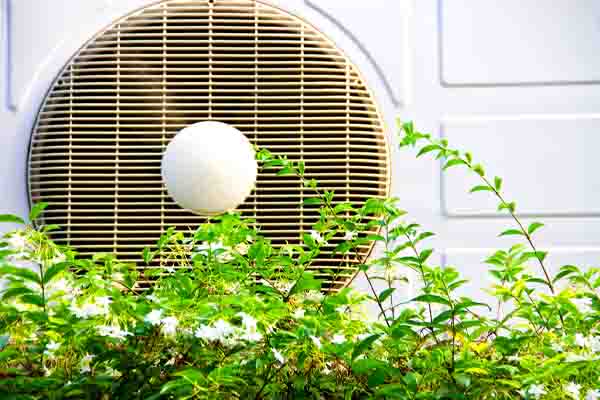
The outdoors is filled with elements that are hard to control. Homeowners must check the unit regularly to deal with unusual situations right away. For example, fallen leaves could make their way into the unit and block air circulation. If you see any debris on or around the unit, then remove these immediately. If someone placed an object near the unit, then move this away. If plants are growing too close to it, then trim them down. You may build a canopy to protect the unit from falling debris but ensure ample clearance.
10. Heat Pump Has Low Refrigerant
We have discussed how the heat pump uses refrigerant to transfer heat from the indoors to the outdoors, and vice versa. If there is a leak, then refrigerant will flow out and there won’t be enough in the system to get the job done. The heat pump’s performance will slowly decline until it stops working completely. Before this happens, call an HVAC contractor to find the leak, fix it, and add more refrigerant into the system.
Conclusion
Heat pumps are installed to influence their environment. However, the opposite is also true. These HVAC systems are also subjected to the elements around them. Some can alter the way they work, so homeowners should keep an eye on vulnerable components and intervene whenever necessary. The troubleshooting steps discussed above should help in many situations. If the problem persists, then call a certified technician for assistance. Experts can provide an accurate heat pump diagnosis and a long-lasting solution.
Call McAllister Energy For All Of Your HVAC Requirements

When you need superior HVAC services in Camden County, New Jersey, make sure to call McAllister Energy. We have the best professionally certified technicians on staff for all your high-quality heating and cooling maintenance, installations, replacements, and repairs. All our skilled techs have the knowledge and experience to service your HVAC system correctly.
McAllister Energy provides the most competitive HVAC service rates in the locality. We can help improve your comfort, energy efficiency, and indoor air quality while reducing your energy bills with our maintenance services. If you need to replace or repair your HVAC system, we can recommend the most suitable solutions that fit your budget. Your satisfaction is our priority, so all our work is guaranteed. Schedule a service appointment and call McAllister Energy today. We offer free, in-home estimates.
You can click here to contact us now or call us at (856) 665-4545 to find out more!